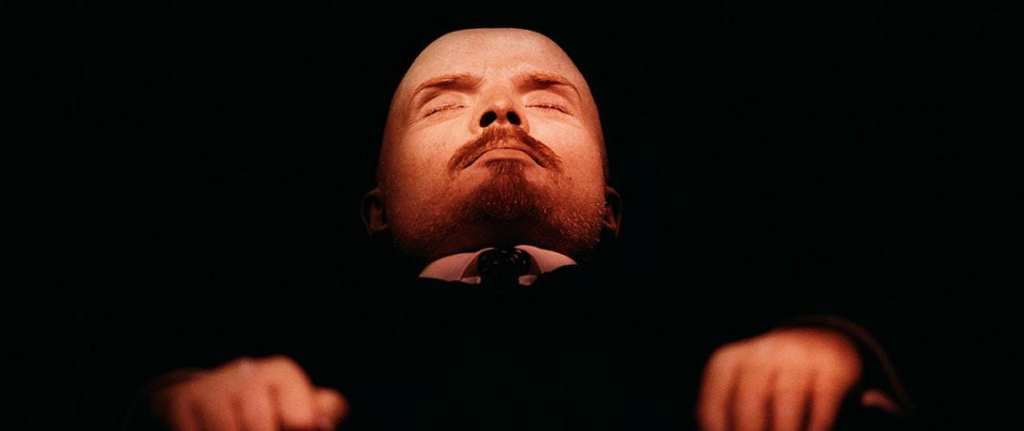Some souls live on even in death. In the case of the individuals profiled below, eternal life meant being preserved for public viewing. From immortal leaders to the world’s oldest mummy, meet 10 famous corpses you can actually visit.
1. Vladimir Lenin

Photo Credit: Flickr,Larry Koester
The leader of the Russian Revolution and the founder of the first Communist state, the Soviets were too proud of Lenin to put him in the ground when he died in 1924. His body lies in a glass sarcophagus in its mausoleum on Red Square. The Russians are secretive about how exactly they keep him looking so perfect (it’s the full-time job of five or six scientists), but experts agree his may be the best preserved corpse on earth. Visitors can view the body in its Mausoleum, although there are strict rules about behavior: Keeping your hands in your pockets is not allowed, for example.
2. King Tut
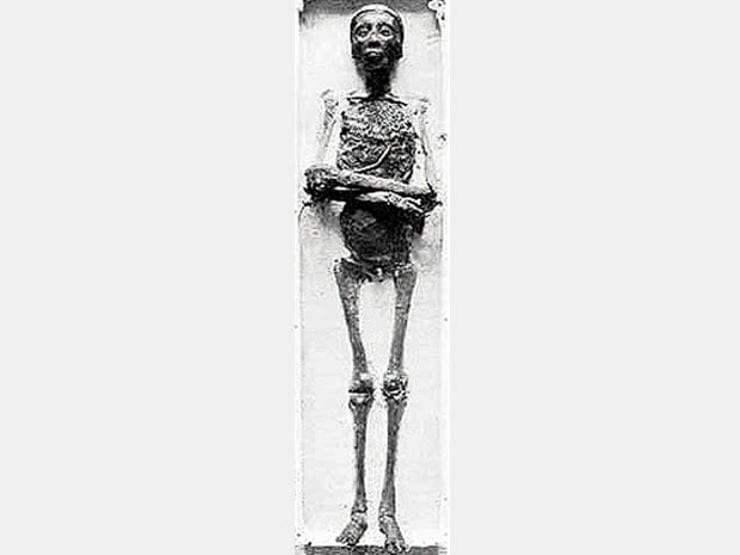
Photo Credit: Wikimedia Commons
You have to give credit to the Egyptians, of course, for coming up with the idea of long-lasting preservation. Tutankhamen was not a particularly important king in his day, but he became a sensation when his unplundered tomb was discovered in the Valley of the Kings more than 3,300 years later in 1922. Even this minor, sickly pharaoh who died before his 20th birthday was buried in a solid gold coffin with rooms full of treasure.
When his mummy was painstakingly unwrapped, it revealed a slight boy about five and a half feet tall with a curved spine. His body is on display in a glass case, still in his tomb, about 30 feet from where he lay for millenia.
3. Saint Bernadette of Lourdes
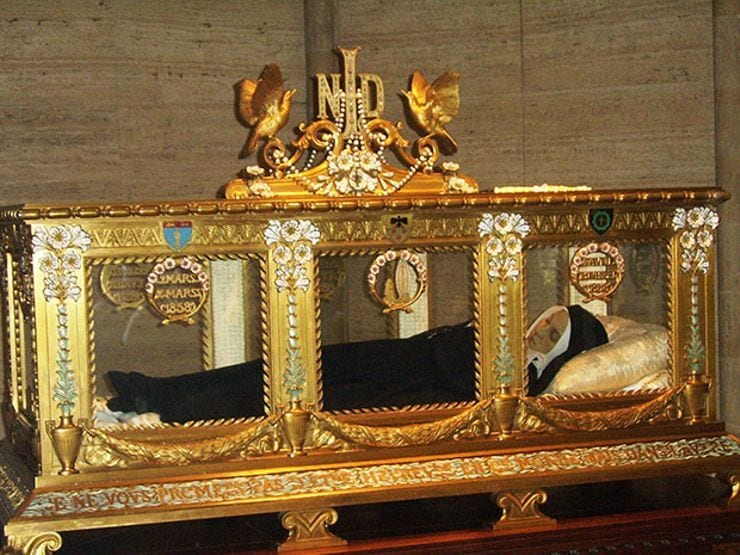
Photo Credit: Wikimedia Commons
In the Catholic Church, a body that does not decay is a sign of sainthood. Bernadette may be the most famous example. She began having visions of the Virgin Mary when she was 14 and living in Lourdes, France. When she died in 1897, she had been visited by the mother of Jesus 18 times and been asked to found the now-famous healing shrine at Lourdes.
Bernadette’s body was exhumed three times over the years since her death, and each time showed no signs of corruption. She was canonized in 1933 and is now on display in a crystal coffin the convent in Nevers, France where she spent the last part of her life. Her skin turned black when exposed to the air, so church officials covered her face and hands with a light wax, but say that she is otherwise unaltered.
4. Ötzi the Ice Man
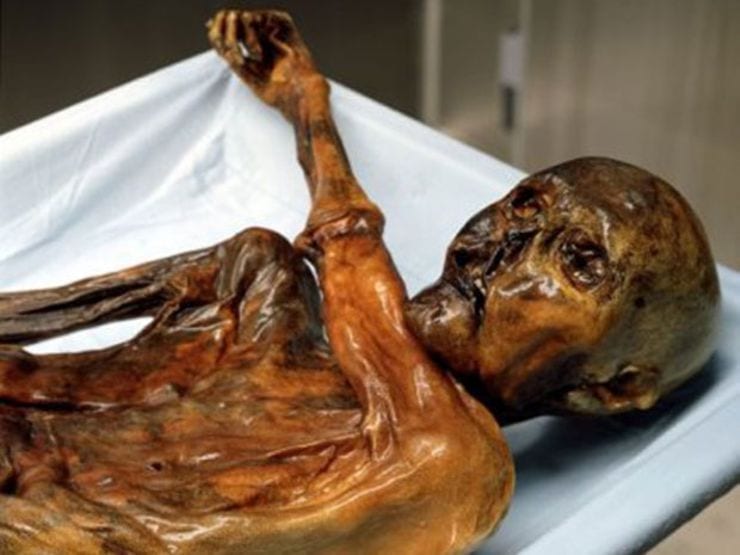
Photo Credit: Wikipedia
Ötzi is really old—the oldest mummy ever found. He’d already been lying in the ice for 2,000 years when King Tut was laid to rest in his tomb. He was so well-preserved that scientists could even identify his last meal. Ötzi was discovered on a glacier high in the Alps in 1991. He caused a sensation almost as big as Tut.
There was no gold, but a fascinating mystery, because Ötzi had been murdered. His death was tied to a stone arrowhead found in his shoulder. Who killed him? And what was he doing so high in the mountains? Was he fleeing? Scientists are still studying the mummy for clues. He’s kept preserved in a special freezer at the South Tyrol Museum of Archaeology in Italy, which has a large permanent exhibit devoted just to him.
5. The Elephant Man
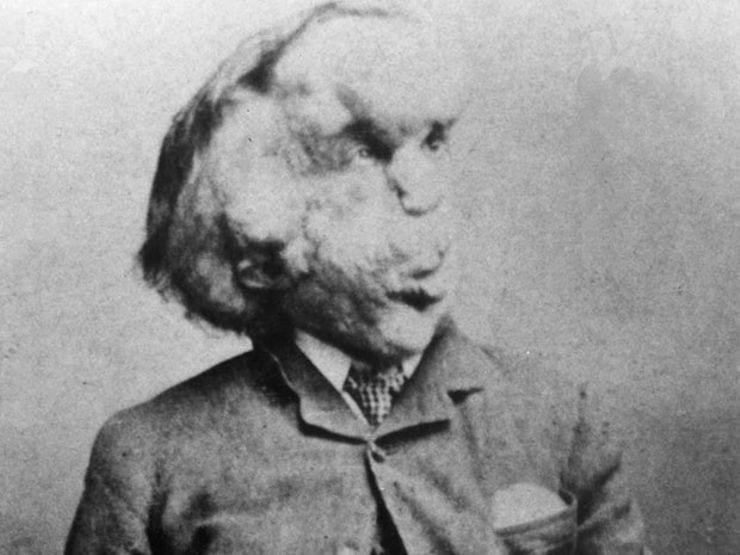
Photo Credit: Wikimedia Commons
If you’ve seen the play or the movie, you have an understanding of the tragic life and death of Joseph Merrick. He had a disease that causes bones, skin and other tissues to grow out of proportion to the body. Merrick found work in a traveling show after realizing that his only other option was a life spent in the workhouse.
He had a brief life of celebrity in London, but died at only 27 when he attempted to lie down to sleep and dislocated his neck. His skeleton is kept at the Royal London Medical School. A replica can also be seen on display at the Hospital Museum.
6. Saint Anthony
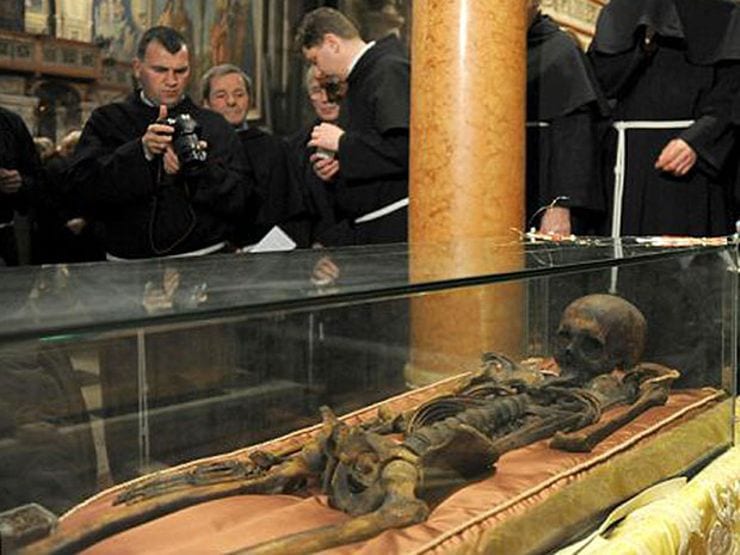
Photo Credit: Daily Mail
Anthony was known for the beauty of his preaching. He died in 1231 and was canonized shortly after. When his body was exhumed for reburial, his flesh had decomposed—except for his tongue. This was considered divine evidence of his holy gift for preaching. His tongue, jawbone and left forearm were preserved in elaborate golden reliquaries. They are displayed in the Basilica of Saint Anthony in Padua, Italy but have several times made tours of other Catholic churches around the world.
7. Kim Jong Il

Photo Credit: The Week
It started with Lenin, and now any Communist leader worth his salt can expect to be mummified after death. Russian scientists, having perfected their techniques, went to North Korea to assist with the embalming and maintenance of Kim Jong Il’s body. North Korea’s Supreme Leader is on display in Pyongyang. So is his father Kim Il Sung.
8. The Inca Ice Maiden

Photo Credit: Wikimedia Commons
This young girl was a human sacrifice. Her remarkably preserved body is thanks to the freezing cold in which she was left. Experts believe that the girl, nicknamed Juanita, was chosen for ritual sacrifice, a great honor in Incan society. She would have been chosen at the age of 12 and given a year of utter luxury before her sacrifice. Juanita was hit with a blunt force on the head before being left to die. Thanks to intense study, scientists have been able to tell that Juanita was likely given a consistent amount of alcohol and coca (the plant from which cocaine is made) before her death—likely to induce religious experiences and keep the young girl relatively subdued.
9. The Soap Lady
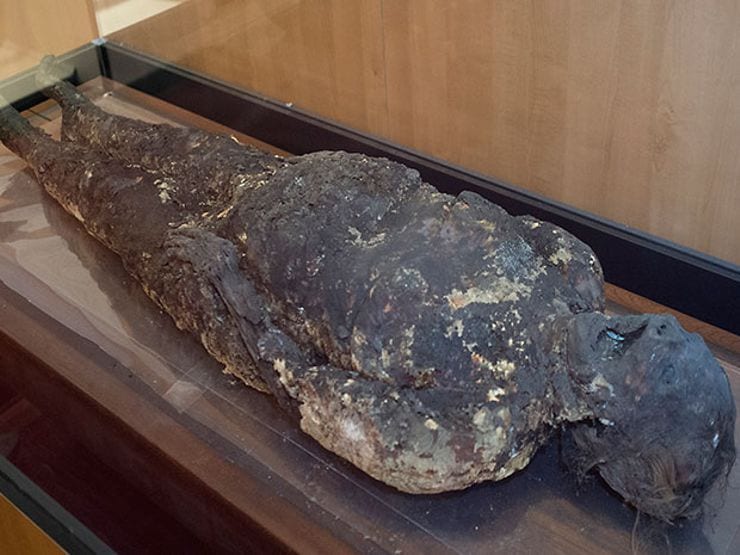
Photo Credit: The Morning Call
Under certain rare conditions, a human body will not, strictly speaking, decompose but instead turn to soap. The Soap Lady, currently on display at the Mutter Museum in Philadelphia, died there in the 1800s. When her body was exhumed to make way for a city building project, it was discovered her tissue had turned to a fatty substance called adipocere, or “corpse wax.” The unusual substance left behind an eerie corpse who appears to be screaming.
10. Lady Dai
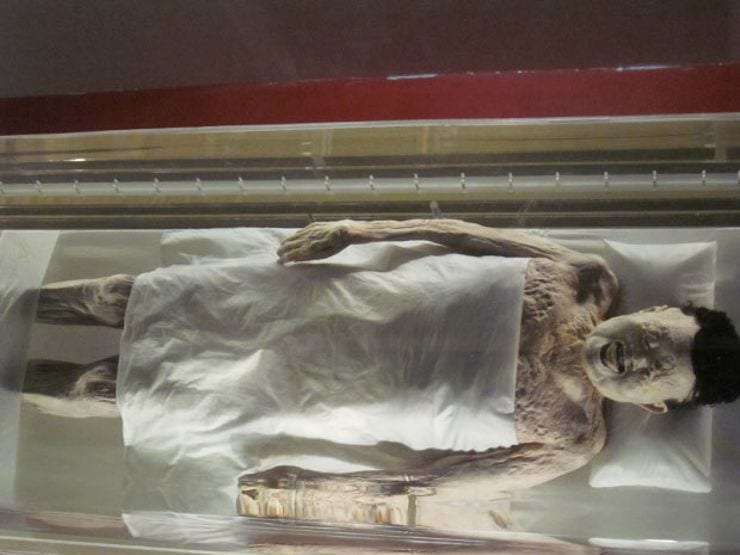
Photo Credit: Wikimedia Commons
What King Tut is to Egypt, Lady Dai is to China. She was born in the Han Dynasty about 2,200 years ago and lived a life of great luxury. In 1971, workers accidentally discovered her tomb and her remarkably well preserved mummy. Her skin was still soft. There was still blood in her veins. Even her eyelashes were intact. Unfortunately, the mummy began to decay immediately after its discovery when it was exposed to oxygen. Lady Dai and the hundreds of valuable artifacts that were buried with her on display at the Hunan Provincial Museum.
This story was first published on The Lineup
Read more below:
9 American Horror Story Characters Based on Real-Life Killers
8 Real-Life Cabin in the Woods Murders That Will Make You Lock Your Doors

